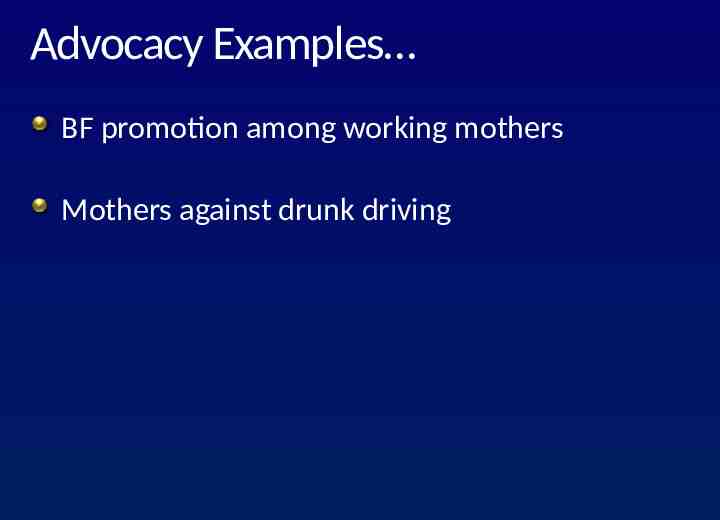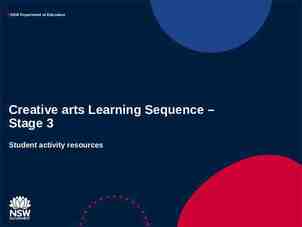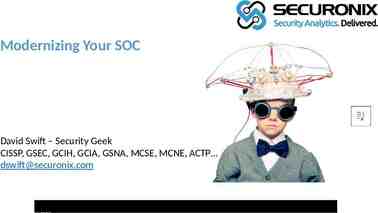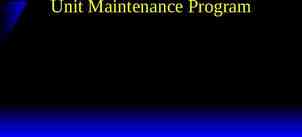Planning for Health Behavior Change Programs HSCI 533 Lecture 2
87 Slides1.19 MB

Planning for Health Behavior Change Programs HSCI 533 Lecture 2

New Years Resolutions This year, I will change X

Health Behavior As you all know – successfully adhering to new years resolutions (changing behaviors) is extremely difficult! So then, how does one go about fostering effective behavior change?

Not simple! Need to undergo a planning process BASIC STEPS Target health behavior ( /-) Identify desired outcome (goals/objectives) Determine what influences it (risk-protective factors) Conceptually explain why it occurs (theories) Design an intervention to reach desired outcome Evaluate its success

A General Model for Program Planning Assessin g Needs Setting Goals and Objectives Developin g an Interventi on Implementi ng the Interventio n Evaluating the Results Models assist program planners with developing effective behavior change interventions

Health Promotion Model to Achieve Healthy Behaviors Needs Assessment Outcomes Determinants of Health Behavior Change Specific risk factors, diseases, &conditions Goals/ Objectives Baseline Evaluation Theory Application Interventions Information Programs Policies Monitoring

Conceptual Planning Model Participatory Research 4. Evaluate Program 1. Assess Needs, Assets of Population Reassess causes 2. Assess Causes, Set Priorities & Objectives Redesign 3. Design and Implement Program *Green & Kreuter, Health Promotion Planning, 3rd ed., Mayfield, 1999. Health Behavior Theory Selection

A General Model for Program Planning Assessin g Needs Setting Goals and Objectives Developin g an Interventi on Implementi ng the Interventio n Evaluating the Results

Needs Assessment An initial process to understand What types of things help to start (influence) the health behavior? Why we continue with a health behavior, even if we know it is bad/good for us? How unhealthy behaviors can be stopped or replaced with healthy ones? How healthy behaviors can be maintained over

Further Assessment Given that multiple factors will be related to the health behavior, it is important to consider: The priorities (importance)? What’s most changeable? More Important Less Important More Changeable High priority for intervention focus Low priority, except to show change Less Changeable Priority for innovative program No intervention

Useful Planning Models PRECEDE-PROCEED Provides a comprehensive structure for planners to develop successful health behavior change interventions And it’s one of the best known theoretically grounded models in health promotion field PRECEDE: predisposing, reinforcing, and enabling constructs in educational/ecological diagnosis & evaluation PROCEED: policy, regulatory, and organizational constructs in educational & environmental development Green & Kreuter, 3rd ed

How it Works? The model begins with an analysis of final consequences Negative health outcomes Retrospective explanations are offered relative to causative factors, categorized as: Predisposing: antecedent; impact motivation Reinforcing: antecedent; barriers & vehicles Enabling: subsequent; feedback & rewards From an understanding of causative factors (use of theory), Educational and policy objectives are developed to inform intervention (program activities) Program implementation and evaluation follow

-----------------------------PRECEDE Phase 5 Administrative & policy assessment Public Health Phase 4 Educational & ecological assessment Reinforcing Phase 6 Implementation Phase 2 Phase 1 Epidemiological Social assessment assessment Predisposing Health education Policy regulation organization Phase 3 Behavioral & environmental assessment Behavior Health Quality of life Environment Enabling Phase 7 Process evaluation Phase 8 Impact evaluation Phase 9 Outcome evaluation PROCEED--------------------------------

PRECEDE Framework Developed in the early 1970s Four Phases designed to aid in the assessment (diagnosis) of health concerns for the planning of the intervention

PRECEDE Phases Phase 1: Social Assessment Define health behaviors (problems & priorities) Consider how such health behaviors affect long-term desired outcomes Quality of Life Happiness Life Satisfaction

PRECEDE Phases Phase 2: Epidemiological Assessment Data gathering step on identified health behavior in terms: Health impact: disability in functioning, morbidity (illness/disease) Behavioral impact: consumption, duration/frequency, adherence, self-care, coping, service utilization Environmental impact: social (capital/connectedness, crime, homelessness), physical (neighborhood), economic (poverty) Allows for the establishment of a baseline of health behavior (prior to intervention)

PRECEDE Phases Phase 3: Educational & Ecological Diagnosis Identifies factors that have potential to influence health behavior change: Predisposing: Reasons for the behavior – Knowledge, Attitudes, Beliefs/Perceptions, Skills/Ability Enabling: barriers & vehicles to the behavior – Peers, Family, Friends, Media (normative standards) Reinforcing: feedback & rewards that make the behavior possible - Availability of resources, Accessibility (services), Rules/Laws

Enabling Factors Availability of resources Accessibility of resources Laws Community Commitment Skills Reinforcing Factors Family Peers Teachers Employers Health Providers Community Leaders Decision Makers BEHAVIOR Predisposing Factors Knowledge Beliefs Values Attitudes Confidence Health literacy

PRECEDE Phases Phase 4: Administrative, Policy & Intervention Alignment Aligns appropriate intervention strategies (guided by behavior change theories) to address targeted goals and objectives (desired outcomes)

ABC Model Health behavior is imbedded in a context; situations that come before and after the behavior A B C Antecedents Behavior Consequences Cue or Stimulate Consequences Behavior affect whether or not behavior is repeated Physical events, inner thoughts/emotions Events that reinforce behavior or fail to do so

A General Model for Program Planning Assessin g Needs Setting Goals and Objectives Developin g an Interventi on Implementi ng the Interventio n Evaluating the Results

Alice asked, “Would you tell me please, which way I ought to walk from here?” “That depends a good deal on where you want to get to,” said the Cat. “I don’t much care where,” said Alice. “Then it doesn’t matter which way you walk,” said the Cat. “—so long as I get somewhere,” Alice added as an explanation. “Oh, you’re sure to do that,” said the Cat, “if you only walk long enough!” —Lewis Carroll, Alice in Wonderland and Through the Looking Glass

Goals vs. Objectives

Goals Broad statements of direction – provide a sense of where we want to go, but they usually do not provide clear, precise statements of our destination.

Ex: Goals for Healthy People Healthy People 2010 defines two overarching goals for the nation: Goal 1: Increase quality of years of healthy life Goal 2: Eliminate health disparities

What do we have to do to reach our goal? Break broad statements into objectives .

Objectives Precise statements of intended targets of change to see desired behavioral outcome Specified in measurable terms Considered to be assessment tools b/c they inform program evaluation

Where to Start Take needs assessment information to guide the formation of objectives for a behavior change intervention Brainstorm about what can be changed Assess changeability Choose Objective targets Develop Baselines (for each objective)

Establish a Baseline Monitor the targeted behavior (and corresponding causal factors objectives) for two weeks to understand where you stand with regards to specified objectives. What is knowledge level? What is skill level? What are attitudes? What is status of social support? What is current behavioral pattern?

Importance of Goals & Objectives in health behavior change interventions

Health Behavior Change “If you do not know where you want to go, it is usually impossible to get there” Need to be clear about where the somewhere is in order to: Design an intervention – clarify what needs to be done to address health behavior Evaluate its effects – measure if change has occurred

Example of General Goals At the end of the program, participant will be able to prepare healthy meals. At the end of the program, participant will reduce the use of non-prescription drugs. At the end of the program, participants will develop good parenting skills. At the end of the program, unwanted pregnancies will be reduced.

Writing Objectives Begin with the question: “what is the target of change?.” then clearly and specifically state exactly what you intend to change with the intervention.

Framework to Follow SMART Specific (what exactly is being changed and in whom) Measurable (% of change to be seen – use a baseline) Action (list, describe, indentify, explain) Realistic (must be achievable) Time-bound (end of session, end of year)

Suggested Guidelines in Writing Objectives Make a rough outline of what you hope to accomplish with the intervention--Jot down key elements of what you hope to achieve. Ask yourself the following: When you get done with the intervention: “How will the participant (you) feel or act, or what new knowledge or skills will you possess that were not present before the intervention?” Begins with: The [participant] will be able to . . .Select action verb list seven dietary recommendations from established guideline. avoid frequenting liquor stores saturated in the neighborhood

Suggested Verbs for Goals and Objectives Goals Apply Appreciate Commit Demonstrate Perform Synthesize Analyze Create Plan Know Use Conceptualize Objectives Arrange Categorize Choose Clean Compute Conduct Construct Define Describe Design Diagram Discuss Drink Eat Identify Itemize Lead List Mark Match Name Operate Perform Pick Position Report Show a willingness Sort Specify Underline Volunteer

Examples of Goals & Objectives Health Behavior Problem: need to change unhealthy eating habits Goal: Reduce risk for obesity Objective 1: Increase cognitive capacity to avoid junk food (i.e., thought stopping) (skill) Objective 2: Increase knowledge of well-balanced “nutritious” diet (knowledge) Objective 3: Increase awareness of stress control (i.e., breathing techniques) (knowledge/skill) Objective 3: Increase attitudinal awareness of societal trends and norms of obesity (attitudinal) Objective 4: Reduce junk food intake (behavioral)

One more thing about Objectives Can each objective be evaluated? If not, restate. The [participant] will be able to . . .verb after intervention (as measured against XX baseline)

Examples Educational Objective: By the end of intervention, individuals will know 15 benefits of exercise (baseline: 1 benefit) Behavioral Objective: By the end of intervention, individuals will increase physical activity to 3 times a week (baseline: 0 times). Educational Objective: By the end of intervention, individuals will know how to access resources about diet and internet (baseline: no access).

Skill Building Exercise What is your health behavior targeted for change? Using SMART way of writing objectives, write at least 3 intervention objectives that would help bring about change in this behavior.

A General Model for Program Planning Assessin g Needs Setting Goals and Objectives Developin g an Interventi on Implementi ng the Interventio n Evaluating the Results

Intervention Total overall strategy to achieve our objectives Vs Method: one component of the intervention

Objectives as Drivers of Selection Interventions (and methods) must be linked with the objectives they are likely to achieve. In other words, the objectives should play a role in driving the selection of all intervention methods.

Health Behavior Theories as Drivers Health Behavior theories link objectives and methods to provide strategies for interventions identifying strategies that will bring about successful behavior change B/C altering health behavior is extremely difficult, one must consider foundational theoretical explanations that describe the forces that: Initiate Maintain Could replace the behavior

Health Behavior Theories: Depends on X and Y X? Y? THEORIES (indv, group, community) Different theories interpret “X” and “Y” differently (based on theoretical assumptions about causation).

Causes Inform Theory Selection If we think in terms of predisposing, reinforcing, and enabling factors as capacities to encourage healthy choices, then it makes sense to identify theories to strengthen these capacities. Example: if a barrier to the performance of a behavior is tied to deficiencies in skills, inappropriate attitudes or inadequate knowledge then theories containing constructs that emphasize skill improvement, attitude change, or increased knowledge should be selected.

Selecting Appropriate Theories Theories are built upon a set of constructs (guiding principles of behavior) – much like bricks function as base units to create buildings. As you begin to analyze the factors facilitating or hindering a behavior, guiding principles or “constructs” begin to emerge that relate to needs assessment info

Self-Efficacy A prominent construct in many health behavior theories HBM SCT TPB/TRA (perceived behavioral control) TTM Definition: A person’s perception of self-control over his/her behavior

No one-size fits all intervention (or method)

What is this public health achievement of the 20th Century? What is the evaluation method to judge this an achievement? Number of Cigarettes 5,000 4,000 35% 3,000 22% 2,000 1,000 0 1900 1910 1920 1930 1940 1950 1960 1970 1980 1990

Cigarette Consumption and Major Historical Events—United States, 1900-2000 Broadcast Ad Ban 1st World Conference on Smoking and Health Number of Cigarettes 5,000 1st Great American Smokeout Nicotine Medications Available Over the Counter Master Settlement Agreement Fairness Doctrine Messages on TV and Radio 1st SmokingCancer Concern Surgeon General’s Report on Environmental Nonsmokers’ Tobacco Smoke Rights 1st Surgeon General’s Report 4,000 End of WW II 3,000 2,000 1,000 Movement Begins Great Depression 0 1900 1910 1920 1930 Source: USDA; 1986 Surgeon General's Report 1940 1950 1960 1970 Federal Cigarette Tax Doubles 1980 1990

100-Percent Smokefree Ordinances, by Year of Passage Number of 18 Ordinances Workplace Restaurant Restaurant and Workplace 16 14 12 10 8 6 4 2 0 1985 1986 1987 1988 * Through September 1992. Source: National Institutes of Health, National Cancer Institute (1993). Smoking and Tobacco Control - Monograph 3. Major Local Tobacco Control Ordinates in the U.S. US Dept. of Health and Human Service. Public Health Service, National Institutes of Health. NIH Publ. No. 93-3532. 1989 1990 1991 1992* Year

Tobacco Vending Machine Ordinances Number of Ordinances 180 (Cumulative) 160 Total Ban Partial Ban 140 120 100 80 60 40 20 0 1985 1986 1987 1988 * Through September 1992. Source: National Institutes of Health, National Cancer Institute (1993). Smoking and Tobacco Control - Monograph 3. Major Local Tobacco Control Ordinates in the U.S. US Dept. of Health and Human Service. Public Health Service, National Institutes of Health. NIH Publ. No. 93-3532. 1989 1990 1991 1992* Year

Comprehensiveness In trying to isolate the essential components of complex interventions, none could be shown to stand alone Any combination of methods was more effective than the individual methods The more components, the more effective The more components, the better coverage

A General Model for Program Planning Assessin g Needs Setting Goals and Objectives Developin g an Interventi on Implementi ng the Interventio n Evaluating the Results

PROCEED Framework Developed in the 1980s Last 4 phases (5-8) act as a guide for the implementation and evaluation of the developed intervention Phase 5: Implementation Phase 6: Process Evaluation (monitoring of inputs/intervention delivery) Phase 7: Impact Evaluation (immediate, observable effects - short-term outcomes) Phase 8: Outcome Evaluation (long-term outcomes)

Application of Information to Guide Interventions Theories Strategies Outcome Skill Building Training HMB Education Social Support TRA SCT Motivational Training Reminders Social Support Group Improved Health Behavior

Process Evaluation Concerned with what one hopes to accomplish during the intervention to achieve the desired outcome (behavioral change) Process of monitoring how well implementing and adhering to the specific intervention (AKA: fidelity) Whether we are totally successful, partially successful or unsuccessful –must have a clear picture of what was done and not just what we hoped would be done in order to evaluate our results

Monitoring What? Keep track of how you are doing with respect to the specified objectives (as they are measurable). Document throughout implementation (daily, weekly) Log what is delivered or what is received Track progress (in meeting specified activities) Information makes it possible for intervention adjustments

Phase 8: Impact Evaluation Focuses on the immediate observable effects of a program (awareness, knowledge, attitudes, skills, and behaviors) leading to the intended outcomes of a program Improved health behavior

Outcome evaluation Focuses on the end result of a program generally measured by improvements in overall morbidity (illness) Determines whether the intervention met the stated goals

Considerations Need to ensure that efforts to effect behavioral change, factor in environmental and social constraints

The Environmental Imperative Environments provide opportunities Environments provide cues Environments enable choices Social environments reinforce positive behavior and punish negative behavior Legal penalties and financial incentives can be built into environments

Putting it all together

Developing a physical activity promotion program Latina women living in inner-city communities

In Class Activity Pair up to consider the following case: Ms. Smith is a 45 year old Latina women who is overweight and has problems managing her Type II diabetes. She receives a very small retirement income. She lives off the 110 freeway (in Vernon) having no access to safe walking areas or parks in the neighborhood. She also expresses that her very large family (many of whom still live with her) requires a lot of her time for providing childcare. As a public health professional charged with helping Ms. Smith manage her diabetes what do you need to consider?

Formative evaluation & baselines for outcome evaluation Determinants of Health Phase 5 Administrative & policy assessment Phase 4 Educational & ecological Points of the assessment Phase 3 Behavioral & environmental assessment Causal Chain Theory Public Health Predisposing Interventions Reinforcing Policy regulation organization Health Problem Scope Self Study of Needs Risk Factors Health education INPUTS Phase 2 Phase 1 Epidemiological Social assessment assessment Behavior Health Environment Quality of life OUTPUTS Enabling Risk Conditions Objectives *Using Phase 6 Baselines Implementation Activities Phase 7 Process evaluation Ongoing Monitoring/Data Collection Phase 8 Impact evaluation Measurement/Data Collection Phase 9 Outcome evaluation Data Analysis: Are Objectives met?

Activity Feedback Individual-level health behavior factors may include: Increase her knowledge about the disease Change her attitudes Increase her “self-efficacy” Group level health behavior factors: Identify family constraints and encourage family social support of changed practices (diet, exercise) Ecological level health behavior factors: Ms. Smiths’ environment is important to consider, in terms of addressing: low income, lack of access These factors will guide the selection of health behavior theories to inform interventions (which will look different, depending on the factors).

Summary Selecting or writing the appropriate educational goals and objectives is important for any health education program. The selection of an objective should always consider the resources available to achieve that objective. A needs assessment is an important step to take before selecting or writing objectives or selecting methods.

Summary Goals may be general, but objectives must be specific and measurable. In writing objectives, the educational purposes (outcome) must be considered. All domains should be considered if adequate time and resources are available.

More on Interventions How do you change health behavior? Health Education – a major tool of health promotion

Health Education Defined Aimed at bringing about behavioral changes in individuals, groups, and larger populations from behaviors that are presumed to be detrimental to health, to behaviors that are conducive to present and future health Simonds, 1976

Health education can facilitate behavior change in: Individuals Groups Larger Populations

Changing Individual Behavior Modification of individual behavior – on a oneon-one basis Clinical or counseling setting Examples: Mother receiving consultation on how to BF newborn baby; planned parent hood education on STD prevention

Changing Group Behavior Attempts to change the health behavior of multiple individuals in a group community setting, school Examples: Learning healthy eating habits by participating in weight management program; BF support group

Behavior Change in Larger Populations Community level behavior change attempts to change the health behavior of larger populations Tranfat ban in California restaurants Examples: Learning healthy eating habits by participating in weight management program

Example Health Education Practice Concerned with factors that hinder health behavior change Since the 1990s many public schools have stopped having regular PE classes. What health behavior are schools hindering? What type of health education intervention might be implemented to address this concern?

Broader Definition of Health Education Includes Policy Advocacy Campaigns

Policy Examples Policies related to maternity leave Norway: 42 weeks with full pay or 52 weeks with 80% of salary Flexible part time work is available for women after giving birth with income supplemented by maternity benefits Women are entitled to 1 to 1.5 hour breaks to return home to BF or bring child to work Soda ban Junk food ban in vending machines

Advocacy Examples BF promotion among working mothers Mothers against drunk driving

Campaign Examples Reducing HEP B Risk

Other approaches Community Mobilization: persuading community members to attend or participate in activity planned by health educator Community organization: mobilize (coordinate resources) to solve a mutual problem or pursue mutual goals (community forums) Networking: important fxn of health promotion – to accomplish mutually set objectives Coalition building: group of organizations to pursue common goal related to health Advocacy: working for political, organizational change on behalf of interest group











